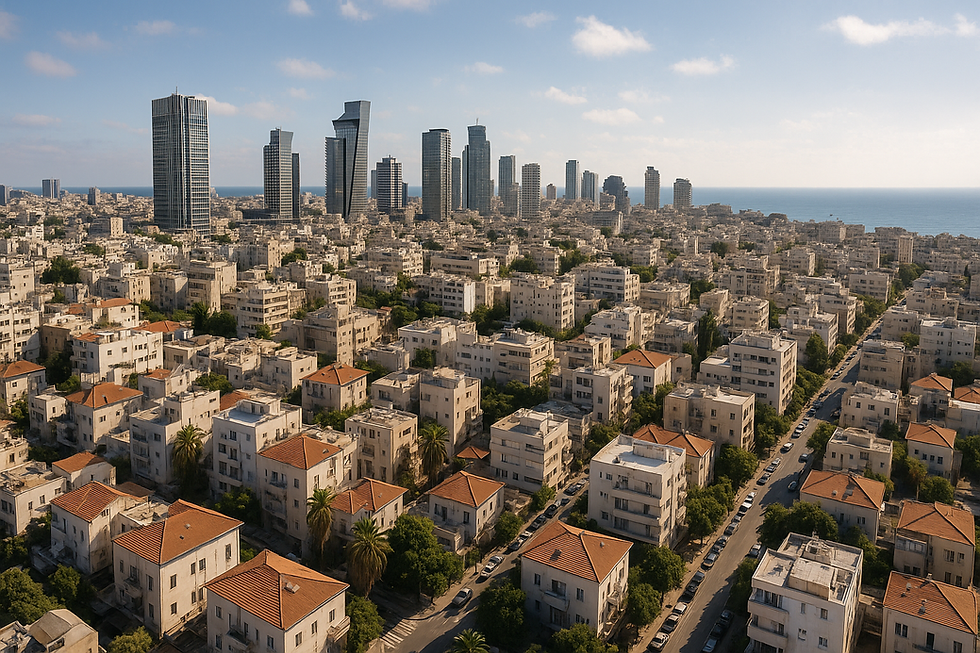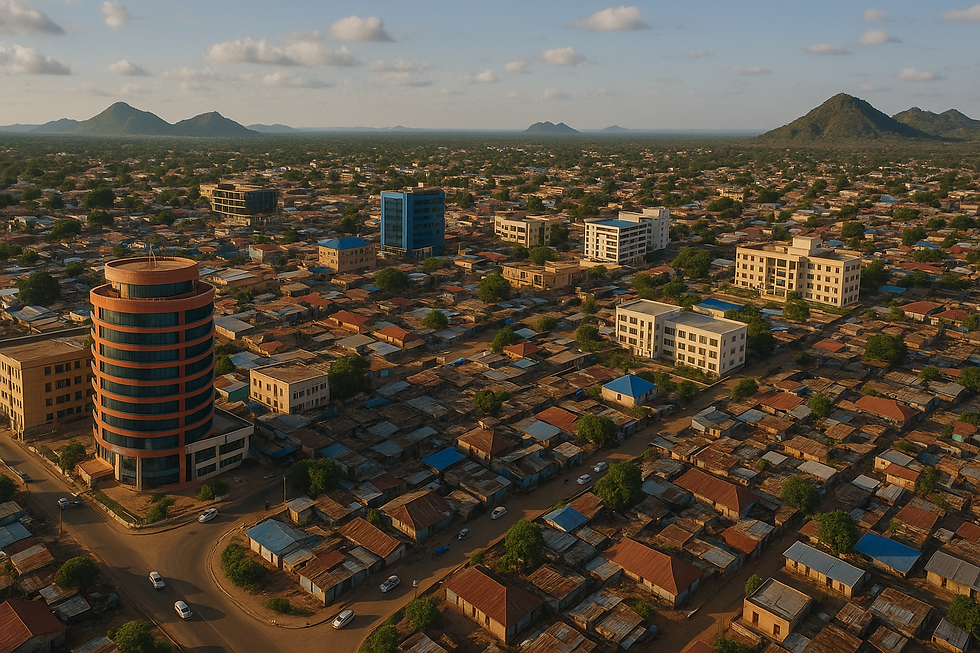Israel’s ESG Inflection Point: Innovation, Inclusion, and the New Sustainability Equation
- tinchichan

- Jul 30
- 5 min read
Updated: Aug 1
For decades, Israel’s global brand has been defined by its technological prowess, geopolitical complexity, and resilience under duress. But as global capital shifts toward sustainable investment, and ESG frameworks become a new currency of credibility, Israel faces a pivotal question: Can innovation alone carry its ESG credentials?
The answer is nuanced. Israel excels in cleantech, water innovation, and digital governance—pillars of the “E” and “G” in ESG. Yet it also grapples with widening social inequality, climate vulnerability, and a fragmented ESG regulatory landscape.

“Israel has the DNA for ESG leadership, but not yet the playbook,” says Noa Asher, Head of ESG Strategy at the Tel Aviv Stock Exchange. “We’re now at a turning point—where sustainability must become systemic, not just sectoral.”
1. ESG in Context: Innovation Nation Meets Sustainability Norms
Israel’s economy is dynamic and diversified:
GDP (2024 est.): $572 billion
Population: 9.8 million
World leader in venture capital per capita, with 8% of GDP spent on R&D
Ranked #4 in the Global Innovation Index (2023)
Yet ESG frameworks are still nascent in many sectors:
ESG reporting is voluntary, except for some financial institutions
No national ESG taxonomy or carbon pricing mechanism
Strong “E” and “G” pillars—but inconsistent “S” indicators (income inequality, social cohesion, minority inclusion)
2. Environmental Sustainability: Water Wisdom, Energy Transition Lags
2.1 Water and Waste Management Leadership
Over 90% of wastewater is recycled—highest rate in the world
Desalination provides ~70% of urban water supply
Advanced drip irrigation technologies have transformed arid-zone agriculture, now exported globally
2.2 Climate Policy and Decarbonization
Israel has committed to:
Net-zero by 2050
30% renewable electricity share by 2030
Phase-out of coal by 2026
Progress is mixed:
As of 2023, renewables made up just 13% of electricity generation (mostly solar)
GHG emissions declined only 3.5% since 2015
No national carbon tax or emissions trading scheme
“We have the tech, but implementation is slow,” says Dr. Gideon Beeri, Director of Climate Innovation at the Ministry of Energy. “Permitting, grid upgrades, and public-private alignment are the bottlenecks.”
3. Social Sustainability: Prosperity with Polarisation
3.1 Human Development and Inequality
Israel ranks high in human capital:
Life expectancy: 83.1 years (OECD average: 80.5)
Education spending among top 10 in OECD
Innovation-driven exports: software, cybersecurity, medical tech
But social gaps are widening:
Gini coefficient: 0.38—one of the highest in the OECD
Poverty rate: 20% (rising to 45% among Haredi Jews and 49% among Arab-Israelis)
Rising cost of housing and living in Tel Aviv and central districts
3.2 Workforce Inclusion
Workforce diversity is a persistent ESG challenge:
Female labor force participation: 59% (OECD avg: 63%)
Haredi men and Arab women are underrepresented in formal employment
A 2023 report by Taub Center found that over 35% of the workforce lacks access to pensions and job training
The government has introduced:
Impact employment programs for Arab-Israeli tech integration
STEM education subsidies for underrepresented groups
A national Social Resilience Index, launched in 2022, measuring inclusion, trust, and well-being across communities
4. Governance: Digital Strength Meets Regulatory Gaps
4.1 Institutional Strengths
Israel’s governance is strong in some ESG dimensions:
Ranked #1 globally in cybersecurity capacity
E-government systems are among the most digitized in the OECD
Capital markets are transparent and well-regulated by the Israel Securities Authority (ISA) and Bank of Israel
4.2 ESG Regulation and Disclosure
Progress is accelerating:
In 2022, the ISA released a voluntary ESG disclosure framework, aligned with TCFD and SASB standards
In 2023, the Tel Aviv Stock Exchange (TASE) launched ESG indices and began requiring ESG disclosures for listed firms applying to flagship indices
Environmental impact reporting is now mandatory for large infrastructure projects
Yet gaps remain:
No national ESG taxonomy aligned with the EU or global frameworks
Limited enforcement of ESG metrics in procurement or public finance
ESG data quality and consistency vary widely across sectors
5. ESG Finance and Green Capital Markets
5.1 Green Bonds and Sustainable Investment
Israel is expanding its ESG finance toolkit:
In 2023, the Israeli government issued its first sovereign green bond: €2 billion, oversubscribed 3.8x
Green finance proceeds are allocated to light rail, solar energy, electric mobility, and environmental R&D
Several municipalities (e.g., Tel Aviv, Haifa) have launched green infrastructure bonds
5.2 Tel Aviv Stock Exchange (TASE): ESG Enablement
TASE is becoming a regional ESG platform:
Hosts multiple ESG indices, including TA-125 ESG
ESG scores are now integrated into credit ratings by Maalot (S&P Israel) and Midroog (Moody’s)
ESG-themed ETFs and impact investment funds are gaining traction among institutional investors
“We want TASE to be a gateway for ESG capital into the Middle East,” says Ittai Ben-Zeev, CEO of TASE. “Transparency, innovation, and investor education are our pillars.”
6. ESG Case Studies: Israel’s Emerging Leaders
Case Study 1: Ormat Technologies – Geothermal Power Pioneer
Ormat, listed on both TASE and NYSE, is a global leader in geothermal and recovered energy generation:
Operates in the US, Kenya, Indonesia, and Turkey
ESG strategy includes Scope 1–3 emissions reporting, biodiversity impact, and local community engagement
Member of RE100, targeting 100% renewable operations by 2030
Case Study 2: Netafim – Drip Irrigation as Climate Tech
Netafim, a global agri-tech firm born in the Negev desert, exports climate-smart irrigation to over 110 countries:
Has saved over 250 billion liters of water through precision agriculture
Works with smallholder farmers in India, Brazil, and sub-Saharan Africa
Integrated ESG metrics into supply chain emissions and farmer inclusion models
Case Study 3: Bank Leumi – ESG in Finance
Bank Leumi, Israel’s largest bank by assets, is integrating ESG into:
Credit risk assessment (especially in real estate and energy sectors)
Green mortgages and SME sustainability loans
Issued its first sustainability-linked bond in 2022, tied to gender and carbon KPIs
7. Comparative ESG Positioning
ESG Indicator (2023) | Israel | OECD Average | UAE | Chile |
Net-zero target year | 2050 | 2050 | 2050 | 2050 |
Renewable electricity (%) | 13% | 31% | 28% | 44% |
ESG reporting regulation | Voluntary | Mixed | Partial | Mandatory (SOEs) |
Gini coefficient | 0.38 | 0.33 | 0.34 | 0.44 |
Green bond issuance (USD bn) | 2.1 | — | 6.5 | 3.4 |
Female labor force (%) | 59% | 63% | 58% | 49% |
8. Strategic Priorities and ESG Risks
Challenges
Grid congestion and regulatory delays hinder renewable deployment
Social cohesion risks amid rising political polarisation
Climate risk exposure in agriculture and coastal zones
ESG literacy gaps in SMEs and mid-market firms
Opportunities
Finalize a national ESG taxonomy, aligned with EU, US, and APAC
Expand climate tech exports as part of soft ESG diplomacy
Mandate ESG disclosures for large firms and financial institutions
Invest in green infrastructure bonds via National Development Fund
Expand ESG education across universities, incubators, and civil society
Conclusion: A Nation at the ESG Crossroads
Israel is not starting from zero—it has long been a laboratory for sustainability innovation. But now, with global capital demanding transparency and accountability, Israel must institutionalize ESG across its financial system, public policy, and corporate culture.
If it succeeds, Israel can evolve from a climate tech exporter to a sustainability integrator—blending innovation, inclusion, and governance into a new development model for the region.



Comments